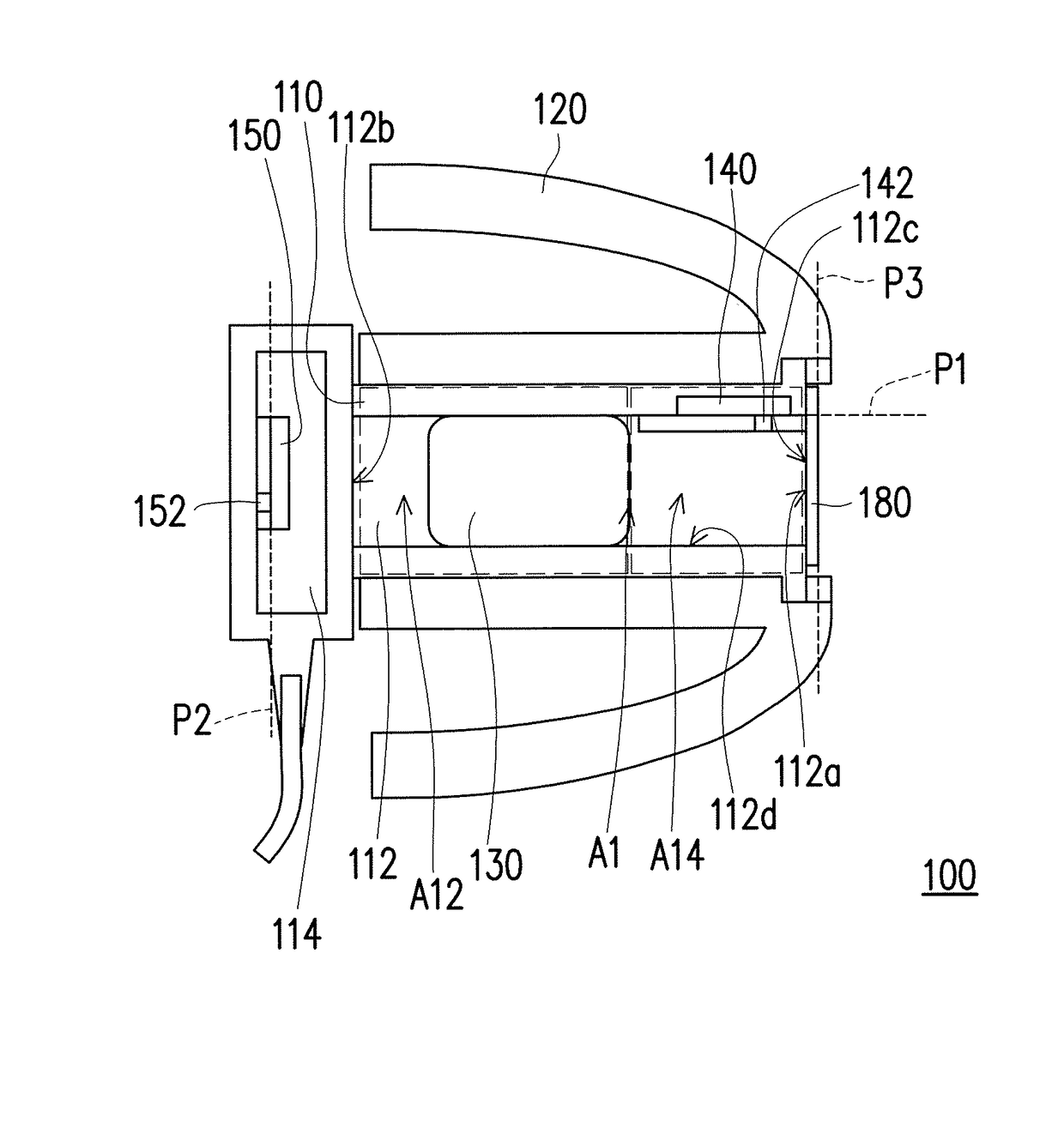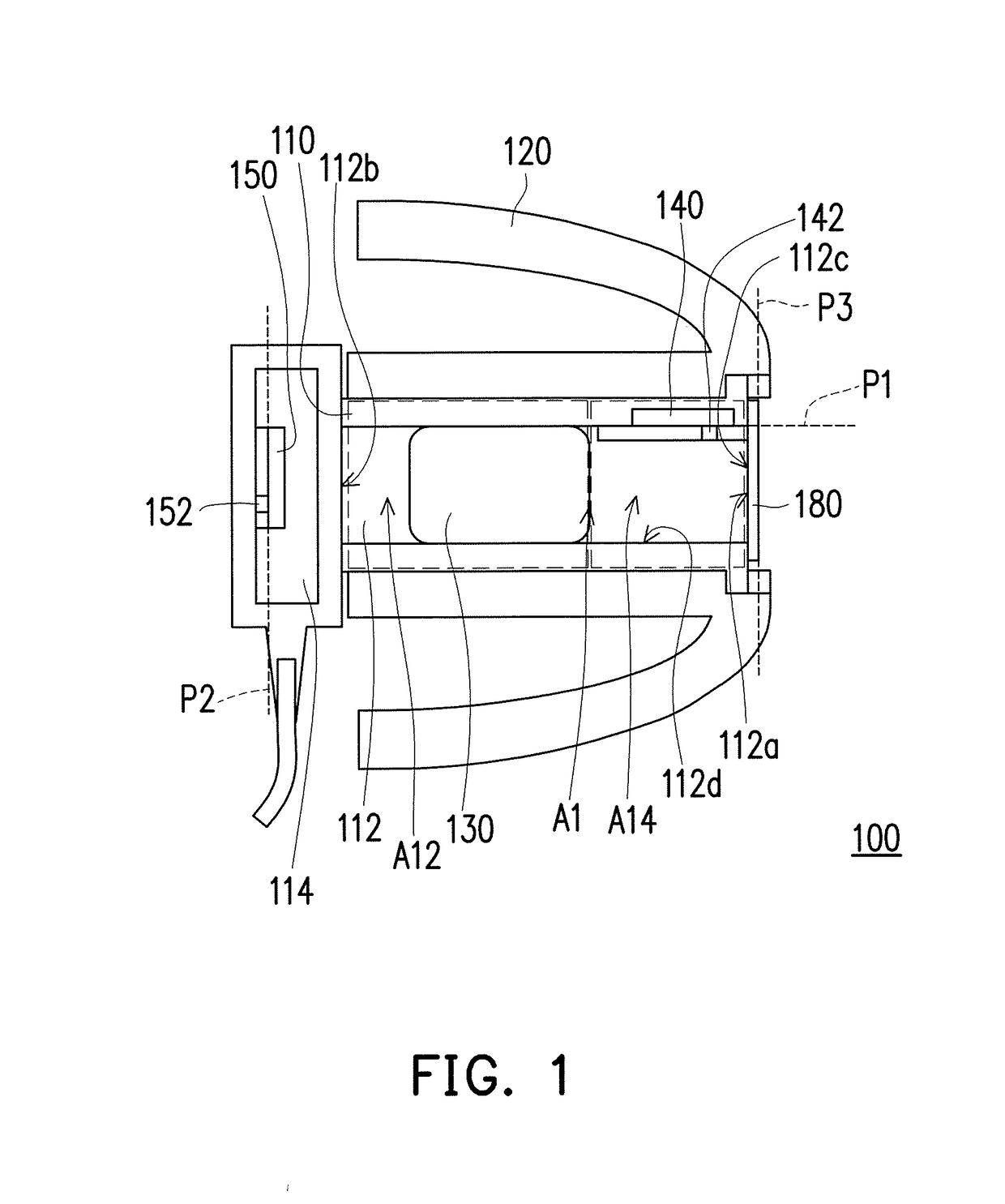Noise-cancelling earphone
- Summary
- Abstract
- Description
- Claims
- Application Information
AI Technical Summary
Benefits of technology
Problems solved by technology
Method used
Image
Examples
Embodiment Construction
[0014]FIG. 1 is a schematic diagram of a noise-cancelling earphone according to an embodiment of the invention. Referring to FIG. 1, the noise-cancelling earphone 100 of the embodiment includes a housing 110, an eartip 120, a speaker 130, a first microphone 140 and a second microphone 150. The housing 110 includes a tube 112 and a chamber 114. The housing 110 is, for example, integrally formed as one piece, or can be a multi-piece member composition, but the invention is not limited thereto. The tube 112 has a first end 112a and a second end 112b opposite to the first end 112a. The first end 112a of the tube 112 has an audio outlet 112c, and the chamber 114 is connected to the second end 112b of the tube 112. The eartip 120 is sleeved on the tube 112, and the eartip 120 has an accommodating space A1 which accommodates the tube 112.
[0015]In the embodiment, the speaker 130 and the first microphone 140 are disposed inside the tube 112 and located in the accommodating space A1 of the ea...
PUM
 Login to View More
Login to View More Abstract
Description
Claims
Application Information
 Login to View More
Login to View More - R&D
- Intellectual Property
- Life Sciences
- Materials
- Tech Scout
- Unparalleled Data Quality
- Higher Quality Content
- 60% Fewer Hallucinations
Browse by: Latest US Patents, China's latest patents, Technical Efficacy Thesaurus, Application Domain, Technology Topic, Popular Technical Reports.
© 2025 PatSnap. All rights reserved.Legal|Privacy policy|Modern Slavery Act Transparency Statement|Sitemap|About US| Contact US: help@patsnap.com



